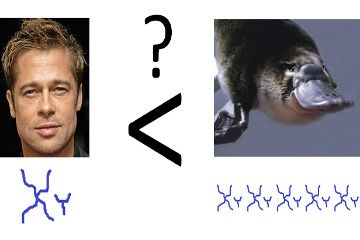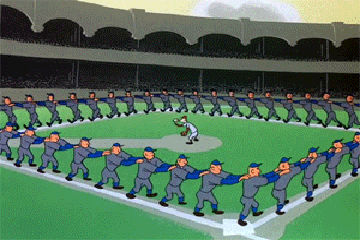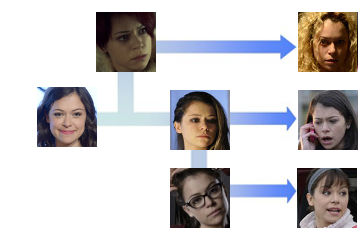What I’ve Learned:
“X-linked inheritance: sometimes chromosomes aren’t X-actly as they should be.”
We humans have a bunch of chromosomes — balled-up tangles of DNA — lying around our cells. Forty-six of them, in fact, in twenty-three pairs. We get one chromosome of each pair comes from our mother and one from our father — though they may smush together and intermingle during the fertilization process.
(That’s the chromosomes, not our parents. They smushed and intermingled right before the fertilization process, obviously. Also, Barry White was probably involved, which you don’t typically find at the chromosomal level.
Most DNA strands are more into Marvin Gaye.)
The last chromosome pair — the “sex chromosomes” — is special. Males get one copy each of an “X” chromosome and a “Y” chromosome. And females double up on “X” chromosomes, leaving out “Y” altogether.
(The chromosomes get those names because under a microscope, they look a little like the alphabet letters.
To whom, I don’t know. Maybe Elmo from Sesame Street is in charge of naming biological structures.)
Put another way, if a fertilized egg gets the “Y” chromosome from the father (and one of the mother’s “X” chromosomes), the child will be male. If it gets the father’s “X” (and a second “X” from the mother), it’ll be female. Genes on these chromosomes will kick in during development, to determine the sex of the child.
(That’s how it works in humans, anyway, and most other mammals. Some animals have different sex chromosomes — like chickens, where hens have ZW and roosters are ZZ. Or grasshoppers, where females get XX and males get one X, nothing else, and are told to suck it up and stop whining.
Or platypuses, which have ten sex chromosomes, because of course they do. Platypuses are freaking weird.)
The XX versus XY choice has consequences down the line. Many genetic traits are “recessive”, meaning if just one of your two chromosomal copies is defective, you’re fine. Only if both are screwy will you have the trait or disease. For genes on, say, chromosome 3 or 12, that’s okay — everyone’s got two copies, so it’s rare to get both mucked up at once.
But X chromosome genes are trickier. Males only get one copy of X — from their mothers, remember, because to even be male, they had to get a Y from their fathers. If a gene on that lonely X chromosome happens to be horked up, they’re out of luck. There’s no backup, no “chromosome on the cloud” or flash-drive file to recover. One X chromosome, one chance to get all of “X-linked inheritance” right.
Sometimes, it doesn’t happen. If a recessive trait is X-linked and the father has a wonky copy, his daughters will all inherit it — but one bad copy doesn’t hurt. They’ll still get a “normal” X from Mom, and hopscotch happily away. If the mother is affected, all her kids have a 50% chance of catching the bad copy — but again, in girls, it’s covered by a healthy X (this time, from Dad). Only the sons, with mother’s lone mangled chromosome, get dinged by recessive X-linked inheritance.
(Daughters can also get the diseases. But it takes both an affected father and mother — and a bit of bad luck — to be so dinged. It’s like the sperm and egg walked a black cat under a ladder or something.
There’s also “dominant” X-linked inheritance, where even a single defective copy of a gene causes a disease. Females are more likely than males to inherit these conditions, but they’re pretty rare. Overall, X-linked torpedoes still sink males more often.)
So what issues can X-linked inheritance cause? Common recessive disorders include hemophilia, color blindness and certain types of muscular dystrophy. And the rarer stuff includes even nastier syndromes and diseases you wouldn’t wish on your worst newly-fertilized enemy.
So however many X’s you happen to have, be happy that the dice of X-linked inheritance probability didn’t roll snake eyes for you. Unless they did, and then curse the cocked-up chromosomes that combined to mark the mutant-X spot. If only you’d been a platypus, this might not have happened.
Something much weirder, probably. But not this.






